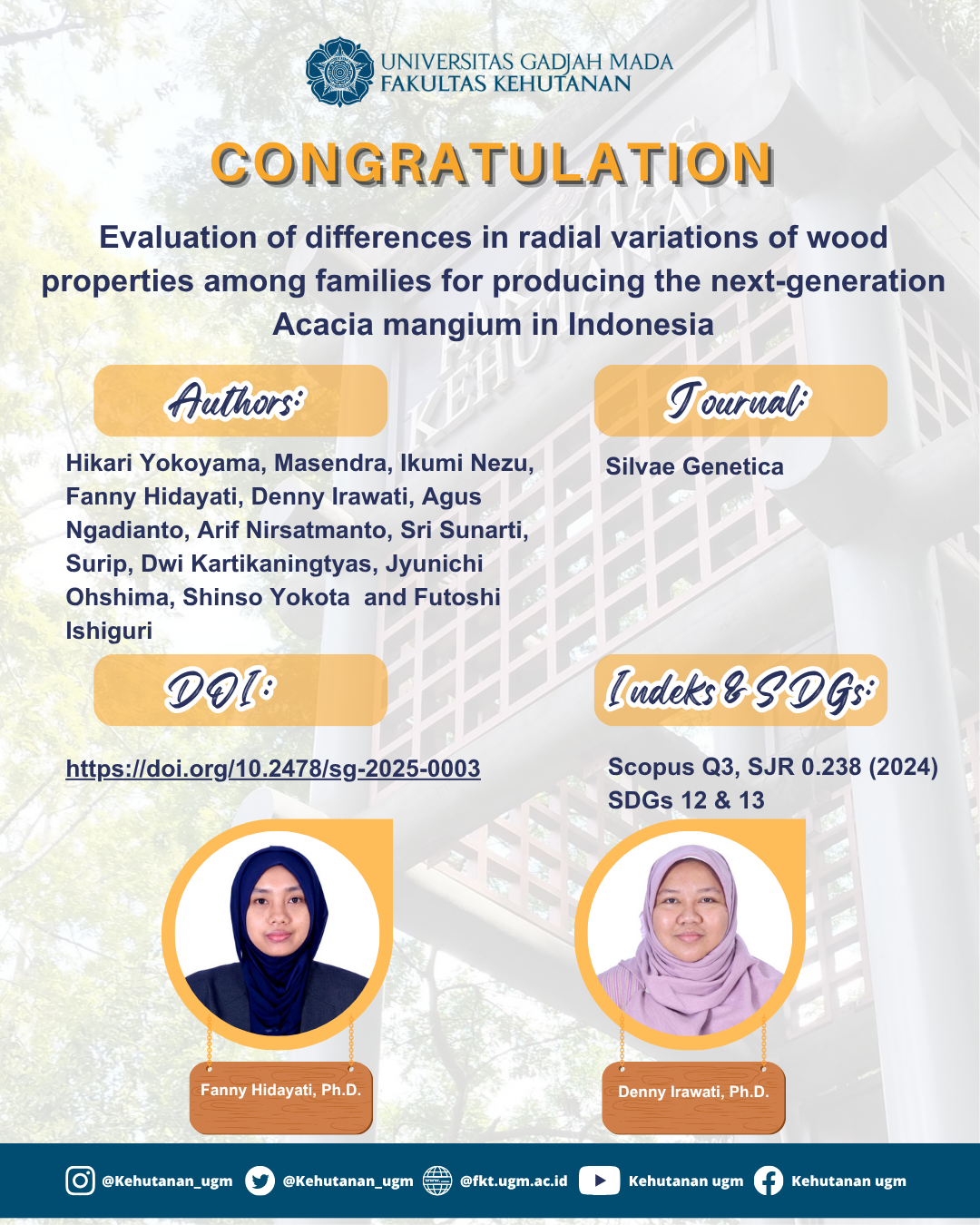
Abstract
To produce the next generation of Acacia mangium Willd. in Indonesia, radial variations of wood fiber and vessel element length, air-dry density, modulus of elasticity (MOE), modulus of rupture (MOR), and compressive strength parallel to the grain were investigated for 20 half-sib families of the third-generation trees. A radial variation modeling approach was applied to detect the differences in the radial variation of wood properties among families. In addition, differences were also evaluated in the boundary position between core and outer wood among families. Based on the results of radial variation modeling, all measured properties showed the lowest values near the pith and increased toward the bark side. However, radial positions showing large among-family variations differed among the wood properties: pith side for air-dry density and MOE, and bark side for cell length and compressive strength. The boundary positions between the core and outer wood, determined by radial variation of multiple properties, ranged from 6.6 to 7.0 cm from the pith for 20 families. However, no significant differences in the boundary positions were found among families, suggesting that the timing of xylem maturation has a species-specific value. Based on the results, it is concluded that the next-generation families with both superior radial growth and high physical and mechanical properties of the wood can be produced from the third-generation A. mangium in Indonesia without considering the differences in the maturation timing of the xylem among families.
SDGs:
SDG 12 : Responsible Consumption and Production
SDG 13 : Climate Action
Link Dokumen:
Download
